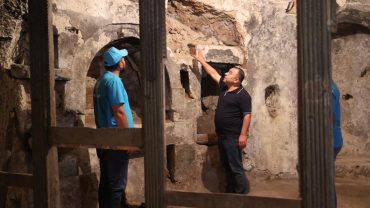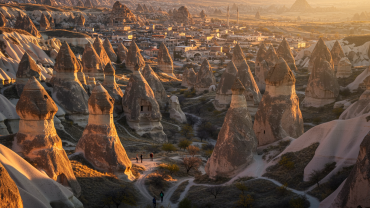
Eastern Anatolia, the most captivating area in Turkey’s east, is the ultimate secret gem for visitors seeking abundant history, breathtaking landscapes, and authentic cultural experiences. Eastern Anatolia’s rugged terrain, continental climate, and ancient heritage create the ideal combination of natural and historical attractions that must go on any traveler’s bucket list. It’s a true highlight in any Eastern Anatolia travel guide.
Geography and Climate of Eastern Anatolia
Eastern Anatolia is the most geographically expansive and high region in Turkey and is marked by mountains, plateaus, and volcanic peaks. Turkey’s highest point, the Ararat Mountain (Ağrı Dağı), is located here. All the varied geography contributes to the region’s stunning scenery — deep valleys, expansive plains, and crystal-clear lakes.
Eastern Anatolia possesses a harsh continental climate that includes long snowy winters and dry and warm summers. Because the region has high elevations, snowfall lasts throughout the springtime and offers perfect weather for winter sport tourism in places like the Palandöken Ski Resort in Erzurum.
Historical Treasures of Eastern Anatolia
Although the natural beauty is stunning, the historical richness here makes the region truly special. Among the most iconic and must-see attractions in Eastern Anatolia are:
Göbeklitepe: The World’s Oldest Temple

Near Şanlıurfa, Göbeklitepe has become known as the “Zero Point in History.” Dating from approximately 9600 BCE, it precedes Stonehenge and the Egyptian pyramids. Göbeklitepe history has transformed what we know about societies in the prehistoric period by demonstrating that complex society and organized religion existed long before we thought. This is one of the most extraordinary UNESCO sites in Turkey.
Harran and Its Beehive Houses
South of Şanlıurfa lies the ancient Harran town known for the mudbrick houses that are shaped like beehives and the rich history in Mesopotamia. Cited in the Bible and ancient Sumerian texts, Harran was the center of science and astronomy. Today, visitors are able to explore Harran beehive houses that have endured the centuries. It’s one of the standout Şanlıurfa attractions.

Mardin: A Living Museum
Perched on the side of a hill that dominates the plain of Mesopotamia, Mardin is the city where multi-religious heritage, narrow streets, and stony architecture form the image of coexistence. Mardin travel blog entries often praise its influences from Syriac, Arab, and Kurdish cultures. Mardin is itself a living museum that contains centuries-old mosques, madrasahs, and monasteries.
Adıyaman and Mount Nemrut: Throne of the Gods

Perhaps the most surreal sunset in Turkey exists atop Mount Nemrut, where gigantic statues of ancient gods look out across the landscape. Constructed by the command of King Antiochus I of Commagene in the 1st century BC, the Visit Mount Nemrut experience reveals enigmatic remnants of what once constituted a great empire. At sunrise or sunset, the site, another UNESCO World Heritage Site, is at its most magical.
Why Visit Eastern Anatolia?
Whether you’re a history buff, nature lover, or cultural tourist, Eastern Anatolia has something special:
- Unmatched historical places in Turkey
- Scenic mountain views
- Less-touristy, Turkey off the beaten path experiences
- Scrumptious regional specialties — don’t forget the kebabs in Şanlıurfa or Mardin’s spice-based dishes
Eastern Turkey tourism remains relatively unexplored by the masses, so the ideal moment to discover its magic before the crowds arrive has now arrived.
Travel Tips
- Best Time to Visit: April–June and September–October are the ideal times for good weather and unobstructed access to the ancient monuments.
- Getting There: Diyarbakır, Erzurum, and Şanlıurfa have major airports that connect the area to the rest of Turkey. You can also choose a bus trip or you can get a group or daily tour to get there in the easiest way!
- Local Etiquette: Dress modestly, especially in rural areas. Respect local traditions and ask before photographing people.
From the ancient Göbeklitepe stones to the mysterious peaks of Mount Nemrut, Eastern Anatolia is a land where civilizations have been born and history springs to life in every ruin and stone. If you’re searching for things to do in Eastern Turkey that combine adventure, cultural depth, and awe-inspiring beauty, look no further than Eastern Anatolia.



Comment (0)